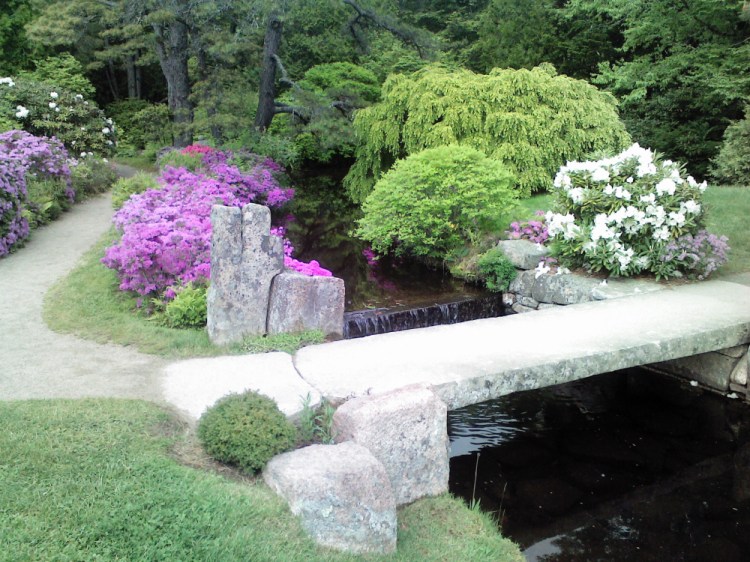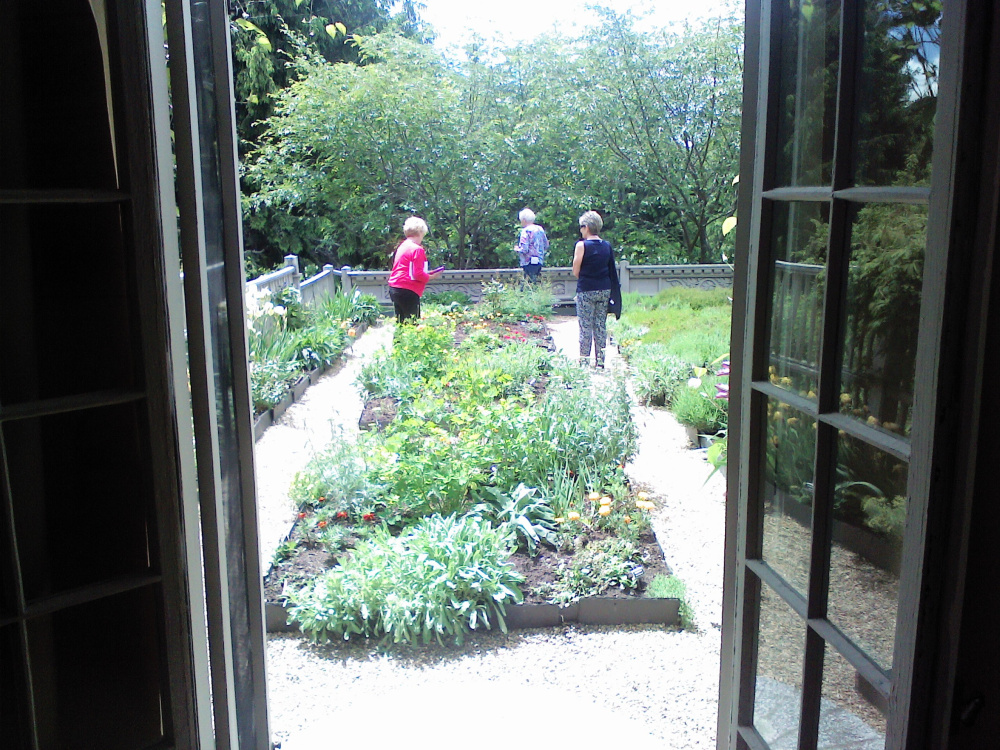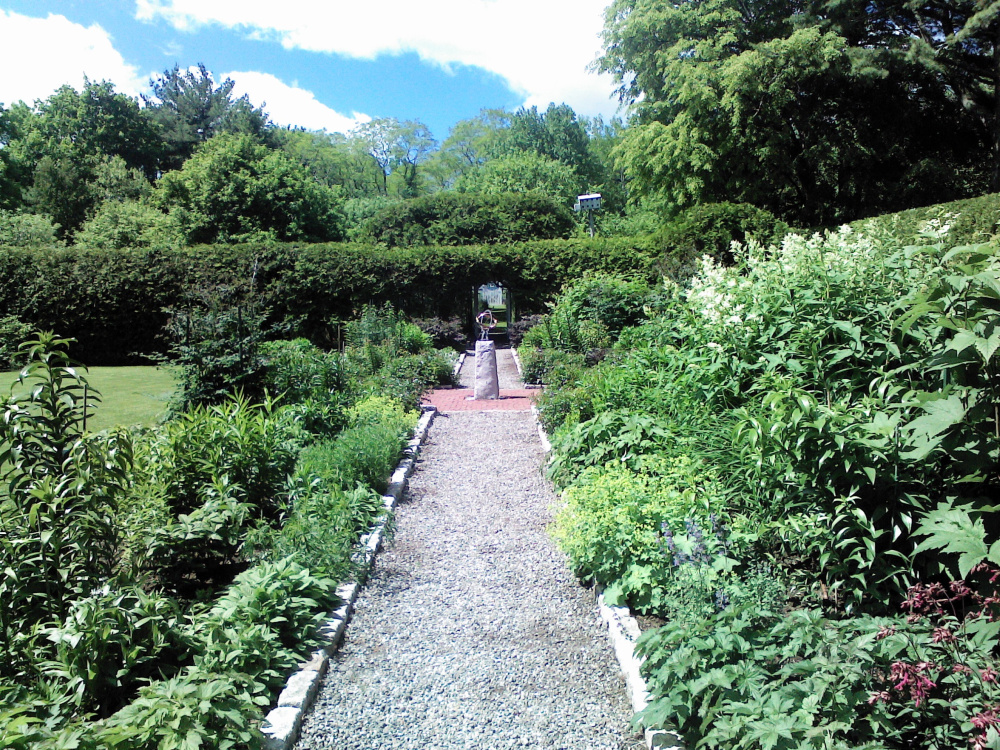Beatrix Farrand, who spent much of her life in Bar Harbor, was among the world’s most celebrated landscape architects.
She was the only woman among the 11 founders of the American Society of Landscape Architects and designed many of the most highly prized gardens in the United States – including Dumbarton Oaks in the Georgetown section of Washington, D.C., at the White House during Woodrow Wilson’s presidency and parts of several college campuses including Yale and Princeton.
Farrand also designed the gardens at The Mount, home of her aunt (and novelist) Edith Wharton in Lenox, Massachusetts. Those gardens are being restored to be closer to Farrand’s original design.
“She broke a lot of new ground,” said Martha Harmon, former archivist/librarian for the Beatrix Farrand Society. The society is headquartered at Garland Farm in Bar Harbor, Farrand’s last home, which includes a small garden she designed for her own use and pleasure.
“She worked with the Olmsted brothers and studied with Charles Sprague Sargent, who founded Arnold Arboretum in Boston,” Harmon said.
Farrand took a garden tour of Europe before beginning her career, and admired two noted English gardeners, Gertrude Jekyll and William Robinson, Harmon said.
I visited five gardens related to Farrand, including three designed by her, when I attended the Garden Club Federation of Maine convention in Bar Harbor earlier this month.
One of her best Mount Desert creations, the garden of Abby Aldrich Rockefeller in Seal Harbor, wasn’t yet open for the season, so I couldn’t visit. But you can make reservations to visit – if any spots are still available.
Farrand created many gardens on Mount Desert Island, but many of them were destroyed by a massive forest fire in 1947.
In 1955, Farrand dismantled the gardens and buildings at Reef Point, her family’s longtime Mount Desert summer home, which she used as a headquarters, for a variety of reasons – including her inability to maintain the property as she would have liked. Many plants from Reef Point were transplanted to the nearby Asticou Azalea Garden and Thuya Garden, which are open to the public.
Touring Garland Farm, where Farrand lived from 1955 until her death in 1959, was a pleasure. The farm was the home of her property manager, and Farrand used many architectural items from Reef Point when she redesigned the property.
The Beatrix Farrand Society was formed in 2003 to purchase Garland Farm and return the 4.9 acres that remain with the property to its Farrand-era design.
The first task was to replace the roof and siding on the house, so the terrace garden wasn’t restored until recently. The garden is divided into three beds, with Farrand’s bedroom looking out on a bed of cool tones, while her caregiver/companion’s bedroom looked out on brighter reds and yellows. The middle panel, with heather and lavender, was designed to provide colors year-round.
Harmon said the Garland garden follows rules that Farrand adhered to in all her designs.
“She had a strict rule of colors, with hot colors at one end and cooler colors at the other,” Harmon said. “She loved single roses. She wasn’t a fan of double and multiple-petaled flowers, which were becoming popular, and she liked white flowers. As a teenager she went to Scotland, and was fond of heather and lavender.”
She also liked Asian influences, and has two bronze pieces from Korea in the terrace garden.
With that garden in good shape, the society now plans to work on the gardens in the front of the house, which haven’t really been touched since the society purchased the property.
The garden club got to tour a private Farrand garden in Bar Harbor that was spared by the fires. It was built from 1923 to 1930, with several garden “rooms” next to a simple farmhouse. The ornaments and gates selected by Farrand remain.
The Sunken Garden at College of the Atlantic in Bar Harbor was designed by Farrand as a rose garden, and the granite and other hardscape elements remain, but the plants of Farrand’s design are gone. A better-maintained garden at the college is the Turrets Seaside Garden.
The azaleas were in bloom for our Asticou visit, and it was gorgeous, while Thuya Garden had massive, rustic stone walls and stairways along the cliffs, but was much more muted.
My wife, Nancy, and I toured Dumbarton Oaks long before I started writing about gardens, and it is among the best-surviving Farrand gardens. It is a large garden on a hillside, divided into rooms, as do many of her gardens. It is a must-see for any gardener visiting Washington, D.C.
If you want to learn more about Farrand, read “Beatrix Farrand: Private Gardens, Public Landscapes,” by Judith B. Tankard, who regularly posts on the Beatrix Farrand Society Facebook page. Another book, not quite as good, is “Beatrix: The Gardening Life of Beatrix Jones Farrand 1872-1959.”
So many gardens to see, I am sure I will be back – especially if I get a reservation to see the Rockefeller Garden.
TOM ATWELL has been writing the Maine Gardener column since 2004. He is a freelance writer gardening in Cape Elizabeth and can be contacted at 767-2297 or at tomatwell@me.com.
Send questions/comments to the editors.





Success. Please wait for the page to reload. If the page does not reload within 5 seconds, please refresh the page.
Enter your email and password to access comments.
Hi, to comment on stories you must . This profile is in addition to your subscription and website login.
Already have a commenting profile? .
Invalid username/password.
Please check your email to confirm and complete your registration.
Only subscribers are eligible to post comments. Please subscribe or login first for digital access. Here’s why.
Use the form below to reset your password. When you've submitted your account email, we will send an email with a reset code.